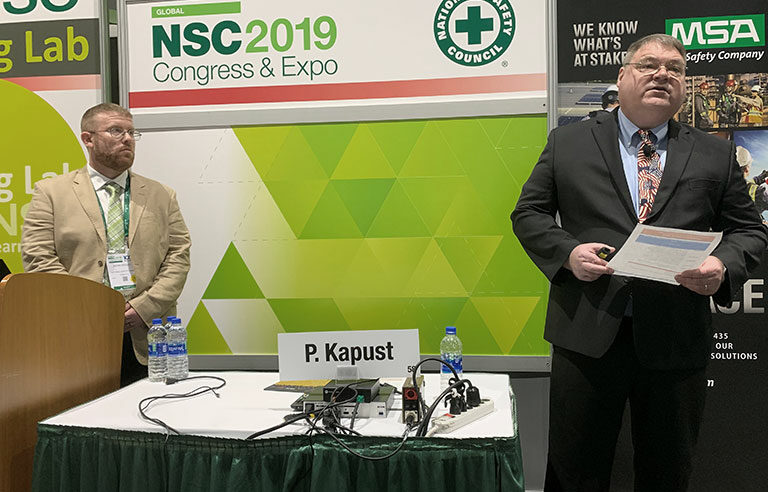Fall Protection again tops OSHA’s ‘Top 10’ list of most frequently cited violations

Update: Read the final numbers, plus top monetary penalties and a Q&A with OSHA's Patrick Kapust.
San Diego — For the ninth consecutive year, Fall Protection – General Requirements is OSHA’s most frequently cited standard, the agency and Safety+Health announced Tuesday at the National Safety Council 2019 Congress & Expo.
The rest of the preliminary list of OSHA’s Top 10 violations for fiscal year 2019 also remained largely unchanged from FY 2018, with only one minor adjustment. Lockout/Tagout, which ranked fifth in FY 2018, climbed one spot to No. 4, trading places with Respiratory Protection.
Patrick Kapust, deputy director of OSHA’s Directorate of Enforcement Programs, presented the list, based on OSHA Information System data from Oct. 1 to Aug. 15. Kevin Druley, associate editor for S+H, moderated the session that took place in the NSC Learning Lab on the Expo Floor.
“Look at your own workplace and see where you can find solutions,” Kapust said during the presentation. “These are common violations. They’ve been around for a while. The answers are out there.”
The full list:
- Fall Protection – General Requirements (1926.501): 6,010 violations
- Hazard Communication (1910.1200): 3,671
- Scaffolding (1926.451): 2,813
- Lockout/Tagout (1910.147): 2,606
- Respiratory Protection (1910.134): 2,450
- Ladders (1926.1053): 2,345
- Powered Industrial Trucks (1910.178): 2,093
- Fall Protection – Training Requirements (1926.503): 1,773
- Machine Guarding (1910.212): 1,743
- Personal Protective and Lifesaving Equipment – Eye and Face Protection (1926.102): 1,411
“Far too many preventable injuries and deaths occur on the job,” NSC President and CEO Lorraine M. Martin said in a Sept. 10 press release. “The OSHA Top 10 list is a helpful guide for understanding just how adept America’s businesses are in complying with the basic rules of workplace safety. This list should serve as a challenge for us to do better as a nation and expect more from employers. It should also serve as a catalyst for individual employees to recommit to safety.”
Finalized data, along with additional details and exclusive content, will be published in the December issue of S+H.
Post a comment to this article
Safety+Health welcomes comments that promote respectful dialogue. Please stay on topic. Comments that contain personal attacks, profanity or abusive language – or those aggressively promoting products or services – will be removed. We reserve the right to determine which comments violate our comment policy. (Anonymous comments are welcome; merely skip the “name” field in the comment box. An email address is required but will not be included with your comment.)

